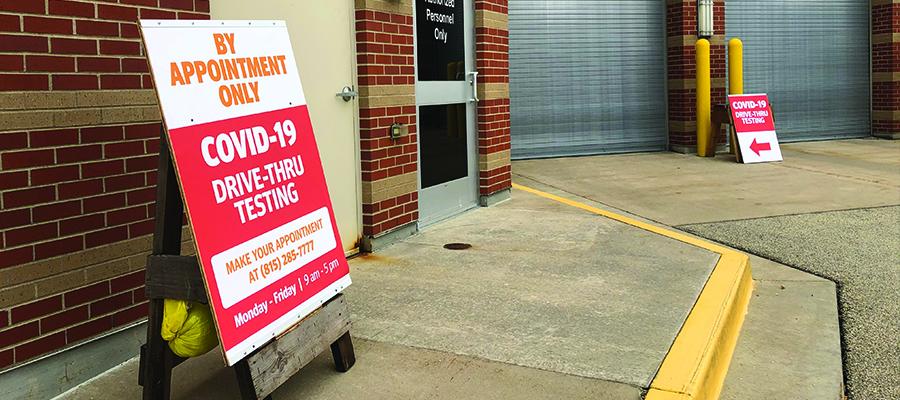Four lessons for hospitals implementing COVID-19 drive-through testing

As more cases of the novel coronavirus (COVID-19) continue to spread throughout the United States, health care leaders are jumping into action to help test patients and treat those affected.
At Katherine Shaw Bethea Hospital in Dixon, Ill., health care leaders knew they had to act quickly to create a rapid response plan. Their solution: drive-through testing for COVID-19.
To ensure smooth implementation, health care leaders pulled staff together for emergency preparedness planning. They decided to use their four-bay ambulance garage as the site for drive-through testing, which is now offered Monday through Friday from 8 a.m. to 5 p.m. Patients must first arrange a pre-screening by phone or KSB’s telehealth platform. For the onsite testing, patients enter at the street level, receive swab testing, and exit through the underground parking garage. Health care workers are being instructed to reserve clinical testing for people meeting federal guidelines related to symptoms and potential exposure to infected individuals.
Here are their top takeaways gleaned from their first week offering drive-through screenings:
- Know CDC’s guidelines backward and forward
Knowing the latest guidelines from the Centers for Disease Control and Prevention was key for nurses at KSB, said Linda Clemen, R.N., KSB’s chief nursing officer. “Our staff was very intent on following CDC guidelines in order to best protect our patients and community,” she said.
To prepare for the drive-through testing and interaction with potential COVID-19 patients, KSB health care leaders helped orient staff with the patient questionnaire, practiced scenarios and threw in some curveballs (traps included role-playing a patient more than 75 miles away seeking care, and a member of the medical staff demanding testing for himself – both against CDC guidelines).
This role-playing type training helped nurses think quickly on their feet and retain the latest CDC guidance. Clemen also stressed the importance of choosing nurses who are stringent in following CDC guidance and who are willing to jump in quickly as opposed to assigning/repurposing other medical professionals just to fill spots. In addition, she emphasized the need to choose staff who can communicate clearly and calmly with patients in any scenario.
- Don’t seek perfection; patients need help quickly
KSB staff first gathered together at 8:15 a.m. Monday morning and launched the drive-through testing at noon. Recognizing that this wasn’t a drill or something they could train for at a leisurely pace, Clemen said staff quickly adopted the mentality of, “We’re doing this for our community and we have to figure out a way to do this, starting at noon.”
Staff took ownership of the initiative, settling into the emergency department to work out the details, write a narrative, and then drew it on a flow chart following an algorithm all staff could follow.
CEO Dave Schreiner said that staff assumed operations would not be perfect and that that was okay. “We knew we were going to make mistakes, not at the cost of patient safety, but in operations, and we knew we’d figure things out as we went along,” Schreiner said. “You miss the good if you wait till it’s perfect.”
- Seek out community partners who can augment your testing efforts
KSB took care of the testing. But the delivery of test results to patients was handled by the health departments of Lee County and Whiteside County. This was the best collective use of resources and capacity, ensuring alignment between different community agencies.
While KSB receives the results, the county health department contacted the patient to review after-care protocol. “We learned early on that if you’re going to incorporate a county health department into your algorithm for treatment, make sure they know that and that they are doing what you think they are doing,” Clemen said.
In an effort to provide the most seamless patient experience, KSB now meets daily with a task force of health care stakeholders, including both counties’ health departments, to ensure they are in alignment with giving patients the same clinical information and instructions. The goal, according to Clemen: “Make sure to set the patient up for success.”
- Help your fellow hospitals find success
As hospital and health systems leaders nationwide face hardships during these challenging times, many are reaching out to each other for support, advice and ideas. “We’re receiving calls from many of our colleagues around the area,” Clemen echoed. “We’re sending each other our plans, algorithms, whatever could help them.”
During the hard times, Schreiner said that he is proud to have a high-quality staff assembled to care for patients and that he is impressed by his team’s fast action. “These are the people running into the burning building,” he said. “Talk about having the courage to do what we’re all being asked to do.”

